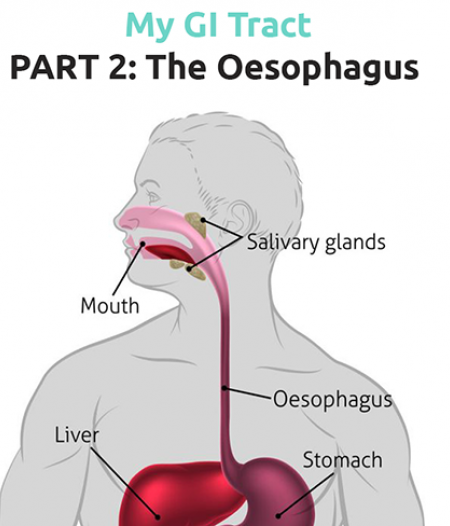Journey Through The GI Tract PART 2: The Oesophagus And Its Function

Journey through the GI tract PART 2: The Oesophagus and its function
Let’s continue onto the next part on the ‘My GI Tract’ series — the oesophagus, and learn how this part of aids our digestion.
Let’s do a very quick recap. In the first part of the digestive process, the mouth receives the food, tastes it and chewing combines with the saliva breaks it up into small, easy-to-swallow pieces (called the bolus). Enzymes present in the saliva break down any starch. The body also uses saliva to lubricate food as it passes through the mouth, pharynx, and into the rim of a 25-centimeter-long tube called the oesophagus.
The Pharynx
Let’s break this down further. The pharynx (throat) is the transition area from the mouth to the oesophagus and is responsible for passing your food bolus from the mouth to the oesophagus.
The pharynx also plays an important role in the respiratory system, as air from the nasal cavity passes through the pharynx on its way to the larynx (the voice box or glottis) and eventually the lungs. Because the pharynx serves two different functions, it contains a flap of tissue known as the epiglottis that acts as a switch to route food to the oesophagus and air to the larynx. The act of swallowing is a complex process that closes the trachea (the windpipe) — to protect our lungs — and moves food into the oesophagus.
The Oesophagus
Located in your throat near your trachea (windpipe), the oesophagus receives food from your mouth when you swallow. The oesophagus is a muscular tube connecting the pharynx to the stomach that is part of the upper gastrointestinal tract. It carries the food bolus along its length, and contracts (peristalsis) to move food down towards the stomach.
Anyone for avocado on toast?
So, let’s take a bite of this tasty avocado on toast. As you swallow this piece, nerves in the surrounding oesophageal tissue sense the bolus’s presence and trigger peristalsis, a series of defined muscular contractions. When the food bolus reaches the lower end of your oesophagus, pressure from the food signals a muscular valve — the lower oesophageal sphincter — to relax and let the food enter your stomach. This sphincter contracts and prevents the contents of the stomach from flowing back into the oesophagus (and therefore avoids heartburn or acid reflux).
Tune in next time, as we explore the next phase of digestion — our major organ of the stomach.
To find out about how to keep your digestive system working effectively, and to book your appointment, get in touch with us now.
